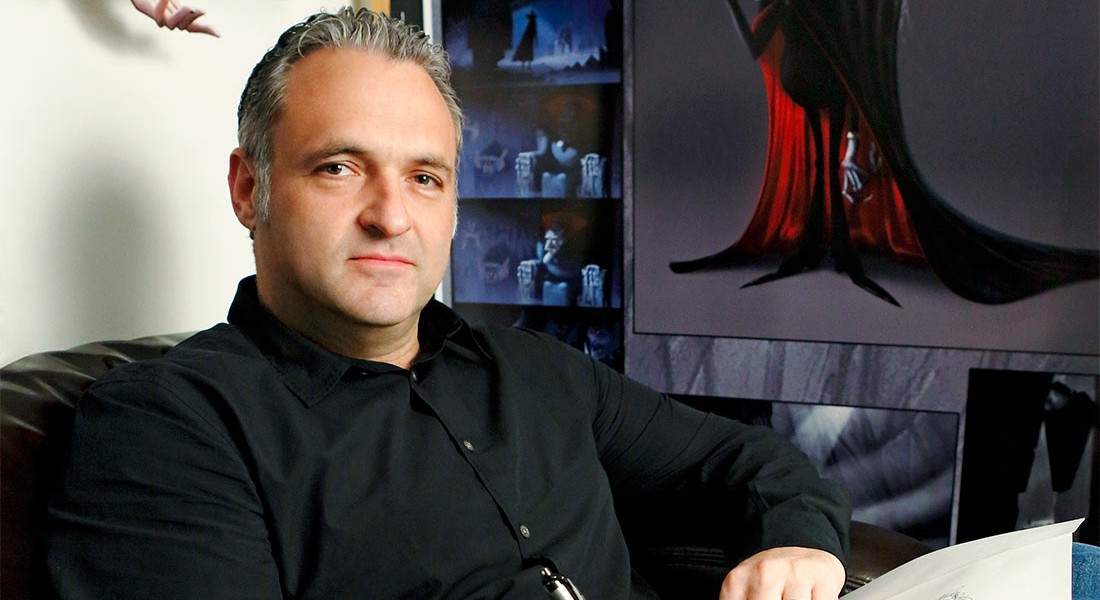
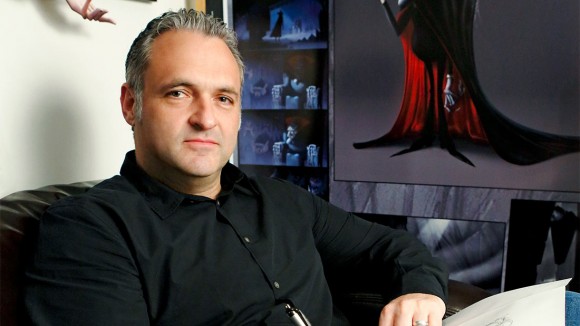
A Conversation With Genndy Tartakovsky About ‘Hotel Transylvania 2,’ ‘Popeye,’ ‘Can You Imagine?’ and ‘Samurai Jack’
The animation community, artists and fans alike, need no introduction to the singular Genndy Tartakovsky.
But the same perhaps cannot be said of Sony, which this week releases the visionary director’s sequel to his highly successful feature film debut, Hotel Transylvania. From the infamous Sony hack that revealed creative interference from Hotel Transylvania 2 writer Robert Smigel and star Adam Sandler (whose execrable Pixels was one of the worst, and most offensive, films of 2015) to the studio’s removal of Tartakovsky from his beloved Popeye reboot, Sony still doesn’t seem to understand that it has a cartoon visionary in its midst.
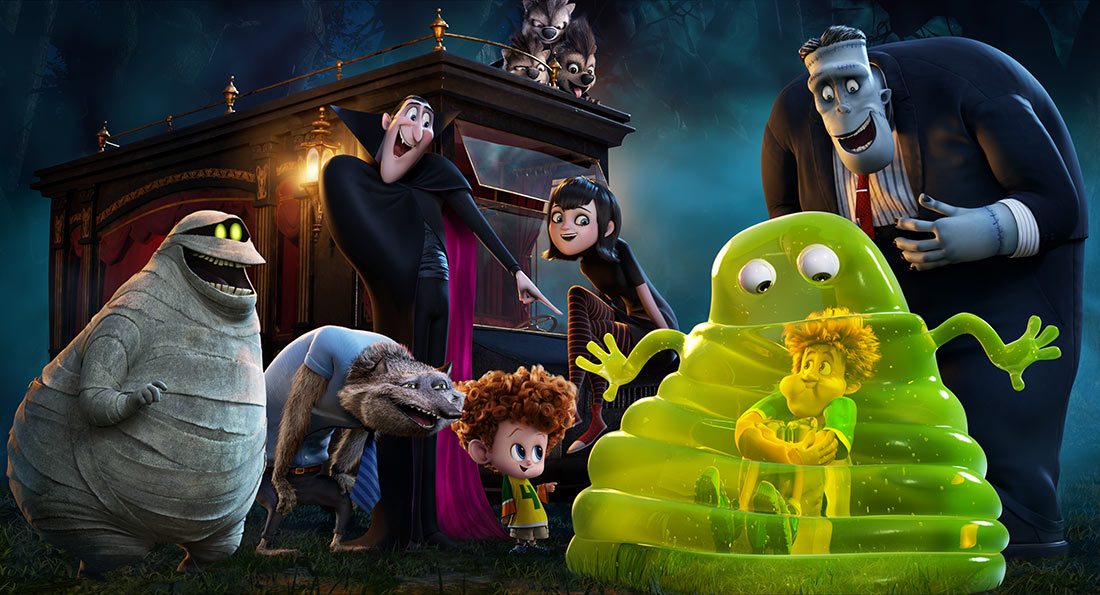
Fortunately, this tumultuous industry backstory doesn’t necessarily come through in Hotel Transylvania 2, which despite its uneven pacing and story still manages to offer more cartoon creativity and hilarious gags than pretty much anything else in animated film’s blockbuster marketplace. But speaking by phone from Sony, it doesn’t take long (at all) for the stubborn and refreshingly frank Tartakovsky to hold forth on his frustrations with the way Hotel Transylvania 2 and Popeye were handled. They are, of course, balanced out by Tartakovsky’s persistent optimism for his next fantastic Sony project, Can You Imagine?, although it is still only in development, as well as the growing certainty that his poetic, timeless Cartoon Network series Samurai Jack will make an inevitable comeback.
And while the same may not be said about his baby, Sym-Bionic Titan — smothered too early in its crib by a short-sighted Cartoon Network, a cancellation that compelled Tartakovsky to abscond to Sony — the Dexter’s Laboratory auteur is nevertheless holding his head high and hoping for the best as Hotel Transylvania 2′s box office returns will come in during a Halloween season in which it has no real competition for the hearts and minds of the all-ages demographic.
I spoke with Tartakovsky about all of these subjects, and why animated feature films, despite perennially appearing in the top five most financially successful movies of the year (any year), are still maddeningly treated like second-class citizens in a cinema industry running short on original ideas.
Cartoon Brew: The last time we spoke at length, you were taken aback by Hotel Transylvania’s success, so this time I hope you’re more prepared.
Genndy Tartakovsky: [Laughs] Hopefully, it doesn’t go the opposite direction on me. I guess it’s good that I was working. We’ll see.
Cartoon Brew: For the first film, you took over a languishing project that had passed through the hands of multiple directors. Is Hotel Transylvania 2 your film, with your stamp on it?
Genndy Tartakovsky: No. Parts of it were easier the second time around, because everyone kind of already knows what it is. We’re not trying to discover the animation style. But at the same time, I think Adam and Robert Smigel really wanted to take control of the second film, because that’s kind of what they do. It’s an Adam Sandler project, and he’s running the show, to a degree. So Hotel Transylvania 2 was more difficult that way.
You know, if everyone is cooking at the same time, it’s kind of hard if they’re throwing in different ingredients when I might not agree. It makes it more complex. That part was more difficult, especially for me and where I’m coming from — which is doing 20 years of television pretty much on my own. I’ve collaborated with everyone I’ve ever worked with, but it’s pretty much my decision, you know? But now it’s like I have to fight for my ideas and decisions, and as a director that’s sometimes stifling and difficult.
Cartoon Brew: You didn’t find that to be the case in the first film?
Genndy Tartakovsky: In the first film, I was just bullish out of the gate. I had no clue how anything worked, so I just went for it. With this film, there were more guidelines and rules set up front about how they wanted things to work.
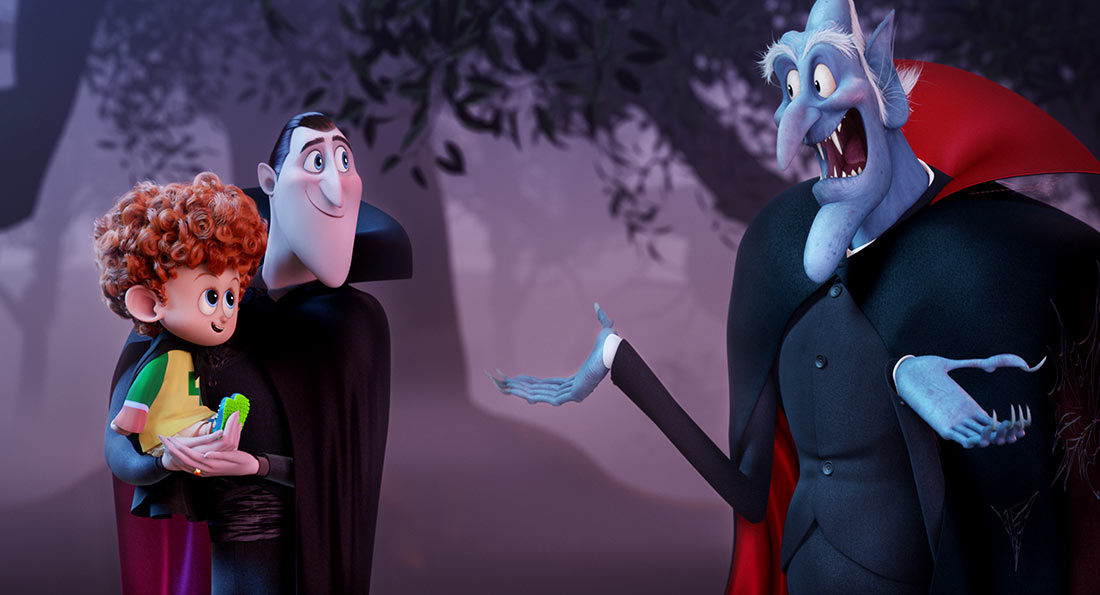
Cartoon Brew: That’s shocking. Your cooking metaphor makes sense if everyone’s a cook, but you’re the only cook here.
Genndy Tartakovsky: [Laughs] Right. Well, sometimes it doesn’t quite work that way. Look, we all collaborate, sometimes for good, sometimes for bad. On this film, some things got better, some things not so much. But that’s the feature business. When you’ve got high-stakes, big-budget films, everyone is going to make sure their talent is served, if you know what I mean.
Cartoon Brew: Sorry, it’s alien to me to try and seize the reins of an animated film from someone who’s proven to be one of the best there is at it.
Genndy Tartakovsky: Thank you. You know, it’s animation. We are the art form that everyone thinks they can do, and that goes across the board. That’s the curse of animation, because it’s considered for kids. It isn’t treated with the same respect that live-action gets, even though animated movies are always in the top five most financially successful films of the year, which is how success is judged.
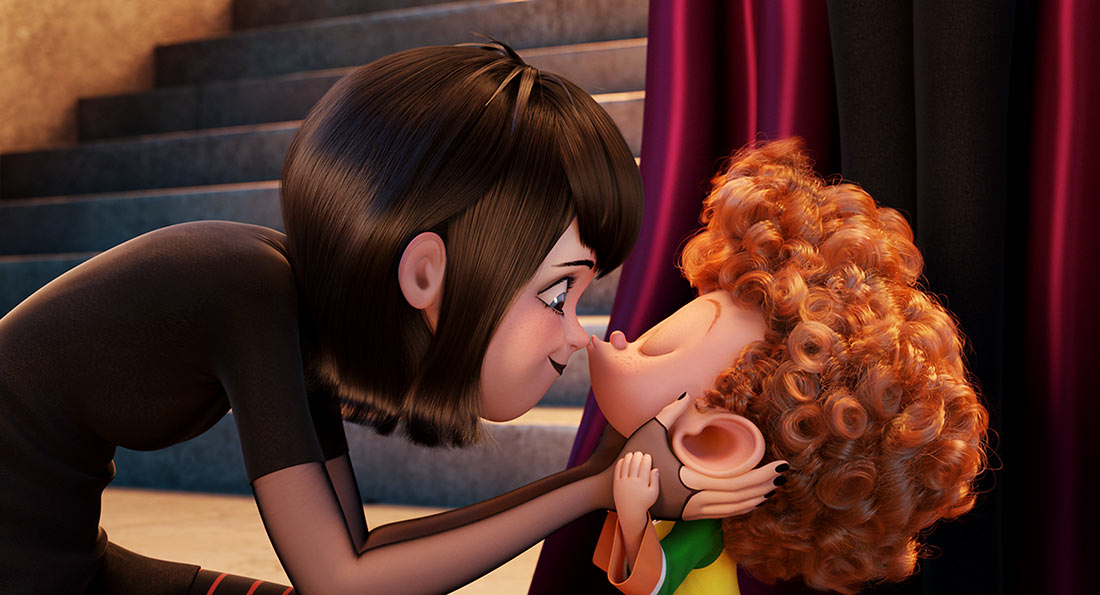
Cartoon Brew: I don’t want to get too interpersonal, but you’ve kind of thrown me for a loop…
Genndy Tartakovsky: [Laughs] I’m sorry! You know, I’m always very frank because I hate it when people are like [gushing], “Oh, everything is great! It’s perfect!” I like reading the true stories, because they’re more interesting.
Cartoon Brew: Let me ask it this way: Did you win more battles than you lost?
Genndy Tartakovsky: Yeah. I think, at the end of the day, yes. From the film that we started out with, to the film that we ended up with, we ended on a high note. But that’s the usual process; storytelling in animated films is very organic. You start from one spot, and hopefully get better each step of the way, and we definitely did, by leaps and bounds. You know, there was some stuff in there that we wanted to cut, but Adam really liked, and since he’s the executive producer he definitely has that power. But there’s also a lot of good stuff left in.
Cartoon Brew: We talked about making the first film less photorealistic and stiff. Is that something you fought for?
Genndy Tartakovsky: Yeah, the animation style is very similar to the first one, except we tried to push it further, especially with expressions. You’ll see that Drac’s expressions have an even larger range. We really messed around more with the size of his eyes. In the big, final fight sequence, I decided we might as well give everything that I was planning to do on Popeye a shot. All the slow-motion, funny punches, because Popeye is all about the funny fights. We just went for it, and I think the animators did a really good job, because that stuff is so hard to do in CG.
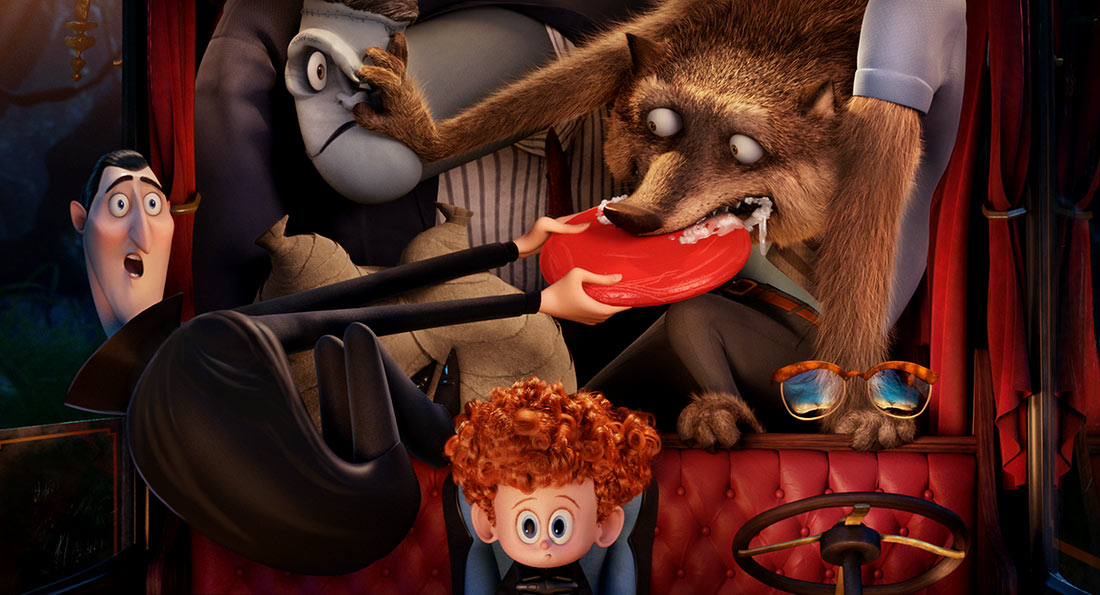
Cartoon Brew: It reminded me of the way the Powerpuff Girls used to kick Mojo Jojo’s ass.
Genndy Tartakovsky: It’s funny, because I was trying to stay away from some of my normal tropes. But then I thought that I never really got to do any of them in CG, so let’s see how it feels. So I got to do a punch with a swish pan behind it; all of the posing was very much to my sensibility.
Cartoon Brew: Tartakovskian, if you will.
Genndy Tartakovsky: [Laughs] My purer stuff for sure was in there. It’s all visual; there’s very little dialogue in that bit.

Popeye
Cartoon Brew: You mentioned Popeye, and I don’t know if you want to be frank about it, but I really want to know why you’re not doing that film.
Genndy Tartakovsky: Basically, we did a screening, and it was great. Internally, everyone was super happy with it. I think it was also exactly what King Features wanted. We had a great reaction.
But this was also during the culmination of the Sony hack, and I could feel that something was going to happen soon. So after the screening, I didn’t get an answer from them, which was weird because everybody was so positive. Usually, we meet and talk, and get notes. But they had a meeting on their own, and that was it. I just got a phone call afterward telling me how great it was, which always makes me suspicious. If they just call to tell you it’s great, there’s something going on, because they didn’t offer any notes. Later on, I personally went to see Amy Pascal, and said, “Look, I’m a big boy. I can take it. I just need some information.” And she said, “Look Genndy, we love you, but we just don’t like Popeye.”
Cartoon Brew: Wow.
Genndy Tartakovsky: And that was the core. I think they’re still developing Popeye, trying to find a way to make it, but just not the way I was making it, which I think was very sincere and respectful to the way Popeye was.
Cartoon Brew: We once talked about your approach to Popeye, which was to enhance the fluidity of those cartoons and characters, which was the great thing about them.
Genndy Tartakovsky: Yeah, not only were those characters really well animated, they were animated really funny. Which is an even harder thing to do, to elicit laughs just from movement. But that’s why I’m in this industry; it’s what I love. Popeye had that in spades; the way those characters moved was really funny. I was so looking forward to it. That little test we did was just a scratch of what we had planned.
Cartoon Brew: Is there a chance Sony would ask you to pick it up again?
Genndy Tartakovsky: I mean, you never know. There’s a reason every project usually takes seven years to get going, because of this type of stuff. But right now, I just don’t see it coming back to me.
Cartoon Brew: So where does that leave you? You had a two-picture deal?
Genndy Tartakovsky: For Popeye and Hotel Transylvania 2. The development of Can You Imagine? was kind of part of that. So right now we’re continuing with its development, and trying to find a place for an original idea at Sony.
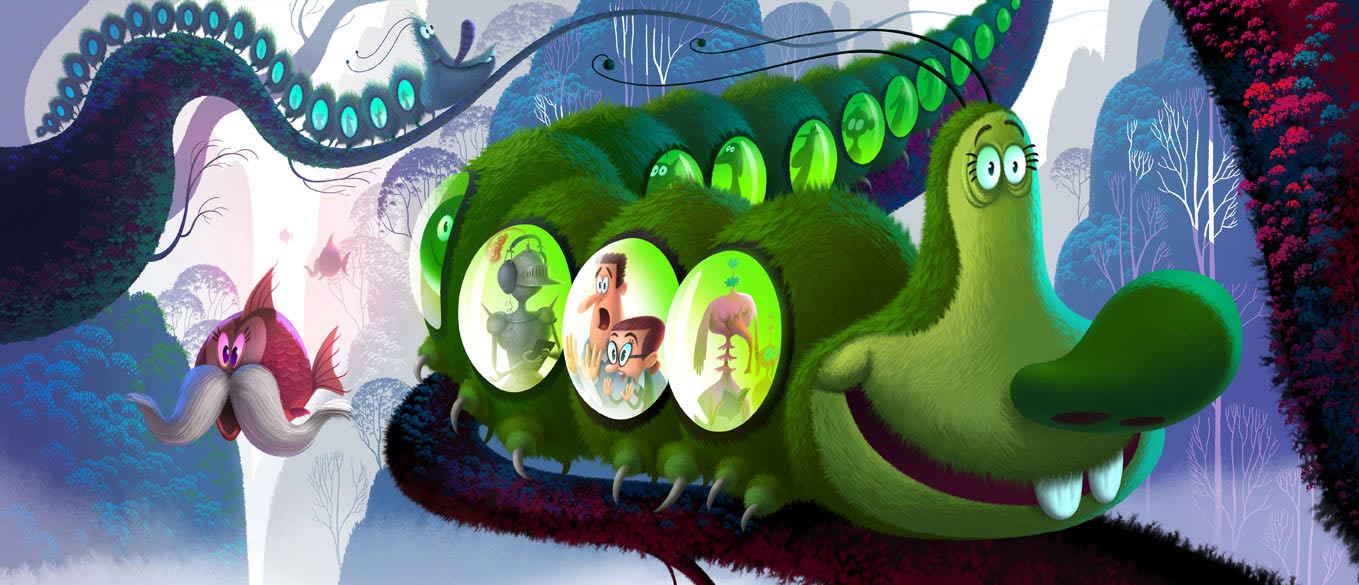
Can You Imagine?
Cartoon Brew: Can you tell me more about Can You Imagine?
Genndy Tartakovsky: It’s a personal story for me, from when I had kids, and some of the changes I went through. The story is about this youthful couple, who are very imaginative and young-at-heart. They have a kid, and everything seems to be going well, but as life does, it sneaks up on them. Things gets serious, they lose their youth, and their connection to their kid. Everything becomes dysfunctional, so the kid runs away into his own imaginary world. So the parents have to journey into his imaginary world, reconnect as a couple, find their inner youth, and win him back.
Cartoon Brew: So you’re taking a surreal trip into the psyche of a youngster?
Genndy Tartakovsky: He’s like a 10- or 12-year-old, but it’s more like they’re going into Narnia rather than actually into his head. It’s more of a portal. That’s the gist of it. It’s really fun, but what’s unique is that it’s really the parents’ story. Getting people to believe in that, that kids will watch a story about their parents, is also one of its hurdles.
Cartoon Brew: Will it retain a youthful charm? Lately, I’ve been writing about how too many so-called all-ages films today have received dark make-overs, most recently Disney’s new Jungle Book. Part of that is the culture, which is almost happy to force kids to grow up too fast.
Genndy Tartakovsky: Not to blame it all on CG, but because CG is so good at realism, or photorealism, there is a tendency to go real with everything — and that can sometimes take the charm, whimsy, and magic of filmmaking out of the experience. CG is enhancing reality, whereas films like Mary Poppins were brighter and more colorful. But for me, Can You Imagine? is more on the colorful side; it’s almost like a fairy tale. It’s funny and energetic, and more pure, like Dexter’s Laboratory, plus everything I’ve learned in the 20 years since I made it, in a feature film.
Cartoon Brew: When you say it’s in development, are you saying that you have a sense that Sony is on board with it?
Genndy Tartakovsky: It’s never a “go” until we get a date and we’re spending money. Like, serious money. So right now, it’s in development. Once we start spending, then it’s greenlit. But they’re very supportive of me, so that’s good. After everything that’s happened, we’re still just trying to find our footing as a studio. Hopefully, if Hotel Transylvania 2 is a success, that will give Can You Imagine? more of a push.
Cartoon Brew: How are you feeling about your place at Sony, as it tries to find its footing? Do they realize how lucky they are? Do I have to write a letter?
Genndy Tartakovsky: [Laughs] I think a letter would always help! It’s a business, and businesses sometimes operate different from the way that feels right to the creative. I think I have a great relationship with everybody at Sony. It seems like they understand what I do, and what I bring to the table. I kind of go from there. But we’re animation, so we’re kind of a stepchild trying to find love from the father.
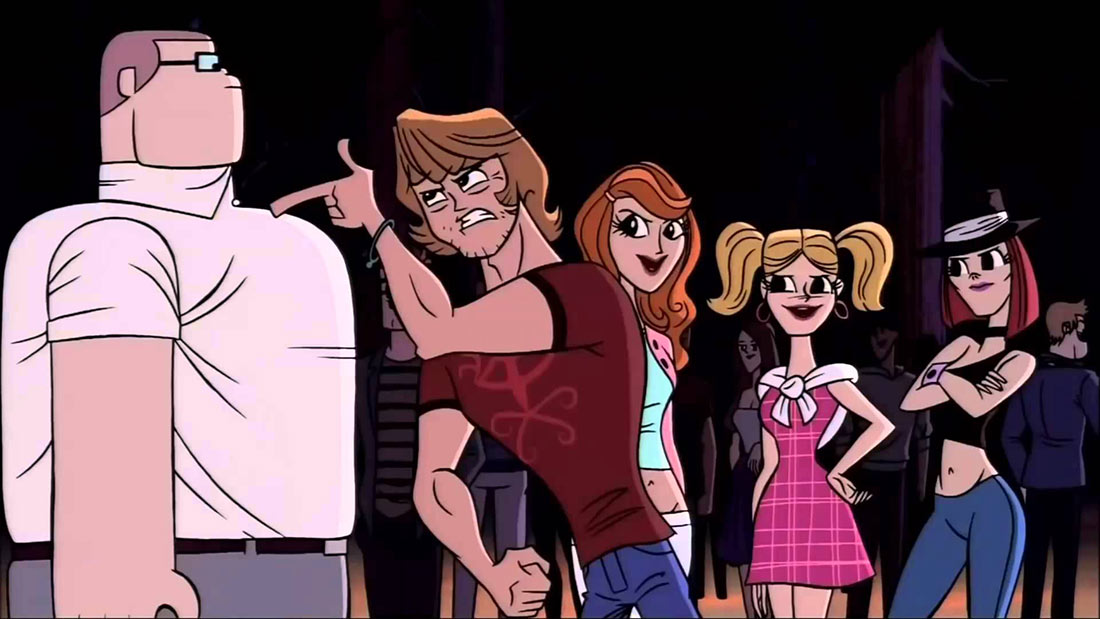
Samurai Jack and Beyond
Cartoon Brew: Do you have a contingency plan? I mean, the Samurai Jack film always needs to get made, Sym-Bionic Titan needs to get picked back up…
Genndy Tartakovsky: I’ve got my back. I’ve been talking to people, seeing what’s out there, searching for the right fit. I do like it here; Sony has a lot of wonderful, talented people. I think, because of my initial experience with Cartoon Network, that I feel like a company man who wants to build us up to be successful. That’s a much more rare thing nowadays than it used to be. I mean, we were the same crew from Dexter’s Lab to Powerpuff Girls; we added some new people on Samurai Jack, but it was essentially the same core. But now, everyone is kind of spread out, so I’m trying to find that perfect home. Basically, I want to be in a situation where people want to make my stuff, whether that is features or television or whatever. I have a lot of stories to tell, and I need a place to tell them.
Cartoon Brew: Is there any movement on Samurai Jack?
Genndy Tartakovsky: There are some rumblings happening, although maybe not a movie. I’m not sure yet, but I’m feeling really confident. In the last five years, I’ve traveled quite a bit domestically and internationally, and wherever I go, Samurai Jack is number one. People are so appreciative of and inspired by it, which is really nice. I feel like it is more popular now than it was when it actually aired. So I think its time is very ripe, and I’m hoping something will happen soon.
Cartoon Brew: Is it still over with J.J. Abrams at Bad Robot?
Genndy Tartakovsky: No, once J.J. started doing Star Trek and Star Wars, he had much bigger, bigger fish to fry.
Cartoon Brew: How about Sym-Bionic Titan? I loved writing about that show.
Genndy Tartakovsky: Thank you, I appreciate that because Titan was probably the biggest heartbreaker I’ve ever had. With Samurai Jack, we finished four seasons and then agreed we needed a mutual break once Star Wars: The Clone Wars [happened], which kind of finished it off. But Titan was a cancellation, which was rough. We had written 10 more scripts, which were 10 times better than the first batch. The story was progressing to a great place; we were just starting to get a feel for what the show was. And that’s the thing about television: very rarely is a show a home run right off the plate. It usually takes a season or two to warm up and get into the magic. Even Seinfeld didn’t really hit its stride until several episodes in. With Titan, I felt like I had just started to say something, and then I got cut off. It’s hugely popular in France, which is funny. Every time I travel there, Titan outweighs anything that I’ve done.
So … I don’t know. I guess the answer is the more successful I am, the more of a chance it has of getting made, because then I have more power to say, “I’d really like to finish this.” But for me, right now Samurai Jack is surely first in line, and then we’ll see what comes after. I’ll never give up on it. Maybe one day, Titan can be crowdfunded. Who knows? There are definitely more opportunities these days to make things independently. So I never give up hope, but I don’t think Titan will be coming back anytime soon.
Cartoon Brew: Is the idea is that it’s a Cartoon Network property, so you’d need to be invited back there to finish it?
Genndy Tartakovsky: Yeah, to a degree. But I think I still have a great relationship with them, so if I asked them for some kind of rights, they would be very cordial.
Cartoon Brew: I think crowdfunding might be a good idea. Charlie Kaufman’s R-rated stop-motion Anomalisa had one of the largest crowdfunding hauls in history, and now it’s been acquired for distribution by Paramount.
Genndy Tartakovsky: Yeah, that’s definitely possible. I think it has become more apparent that you can crowdfund these projects. And I’m very stubborn; I’m a fighter, and I don’t take no for an answer. I’m trying to navigate this studio system to get my stuff made, because studios can distribute on a grand scale. Cartoon Network was great, but it was small. Obviously, it’s a lot bigger now than when we started, but back then it was about 12 million viewers, versus Nickelodeon’s 80 million. And it’s hard, because it takes a long time for something to get popular, and it’s very competitive. I always want to do everything on a mass scale, because we’re in the business of entertaining the most people possible. At the same time, if I run into these roadblocks…
